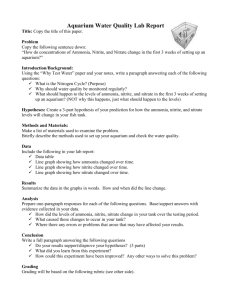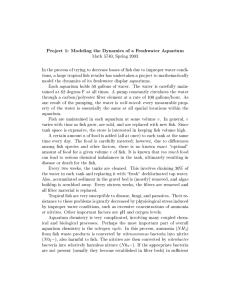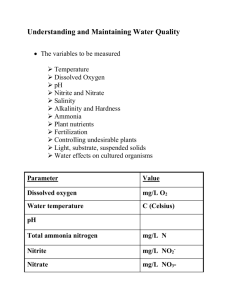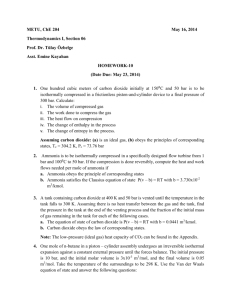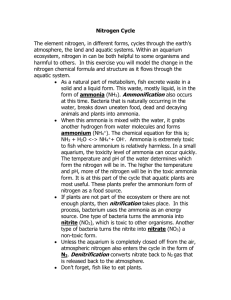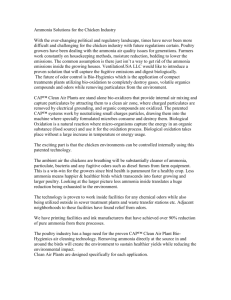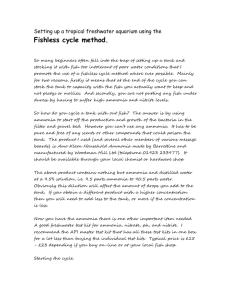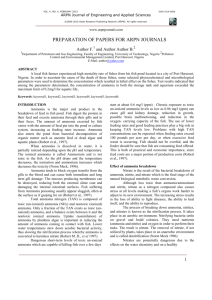10,576 words 55,991 characters with spaces
advertisement
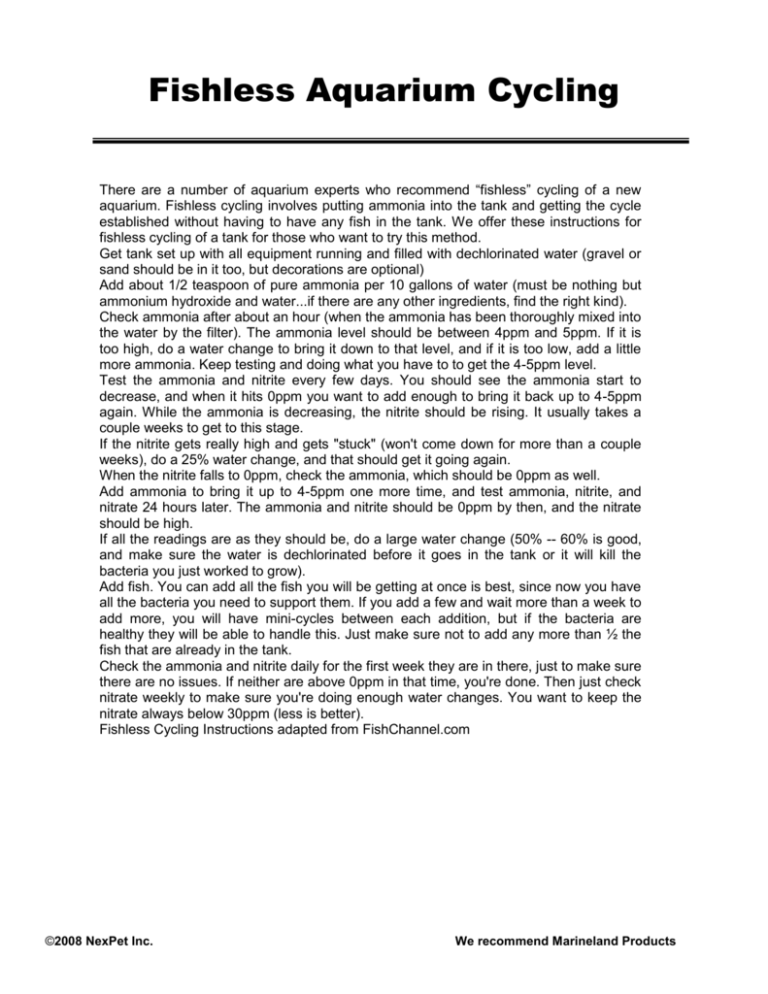
Fishless Aquarium Cycling There are a number of aquarium experts who recommend “fishless” cycling of a new aquarium. Fishless cycling involves putting ammonia into the tank and getting the cycle established without having to have any fish in the tank. We offer these instructions for fishless cycling of a tank for those who want to try this method. Get tank set up with all equipment running and filled with dechlorinated water (gravel or sand should be in it too, but decorations are optional) Add about 1/2 teaspoon of pure ammonia per 10 gallons of water (must be nothing but ammonium hydroxide and water...if there are any other ingredients, find the right kind). Check ammonia after about an hour (when the ammonia has been thoroughly mixed into the water by the filter). The ammonia level should be between 4ppm and 5ppm. If it is too high, do a water change to bring it down to that level, and if it is too low, add a little more ammonia. Keep testing and doing what you have to to get the 4-5ppm level. Test the ammonia and nitrite every few days. You should see the ammonia start to decrease, and when it hits 0ppm you want to add enough to bring it back up to 4-5ppm again. While the ammonia is decreasing, the nitrite should be rising. It usually takes a couple weeks to get to this stage. If the nitrite gets really high and gets "stuck" (won't come down for more than a couple weeks), do a 25% water change, and that should get it going again. When the nitrite falls to 0ppm, check the ammonia, which should be 0ppm as well. Add ammonia to bring it up to 4-5ppm one more time, and test ammonia, nitrite, and nitrate 24 hours later. The ammonia and nitrite should be 0ppm by then, and the nitrate should be high. If all the readings are as they should be, do a large water change (50% -- 60% is good, and make sure the water is dechlorinated before it goes in the tank or it will kill the bacteria you just worked to grow). Add fish. You can add all the fish you will be getting at once is best, since now you have all the bacteria you need to support them. If you add a few and wait more than a week to add more, you will have mini-cycles between each addition, but if the bacteria are healthy they will be able to handle this. Just make sure not to add any more than ½ the fish that are already in the tank. Check the ammonia and nitrite daily for the first week they are in there, just to make sure there are no issues. If neither are above 0ppm in that time, you're done. Then just check nitrate weekly to make sure you're doing enough water changes. You want to keep the nitrate always below 30ppm (less is better). Fishless Cycling Instructions adapted from FishChannel.com ©2008 NexPet Inc. We recommend Marineland Products
